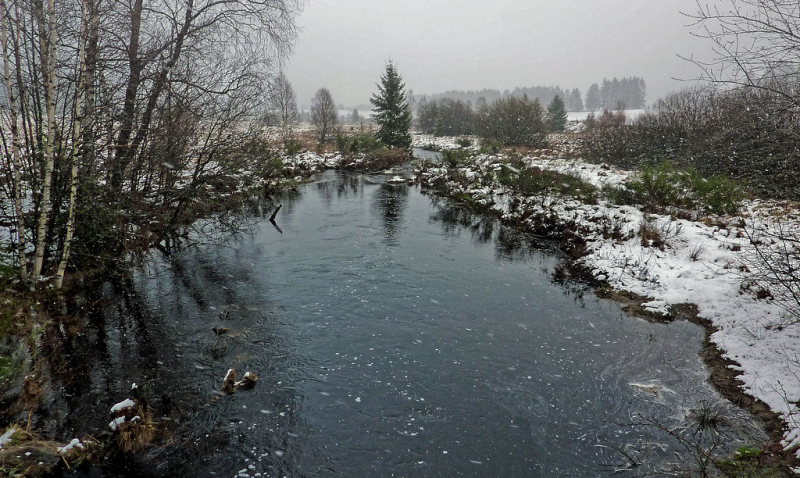Rur

The Rur, also known as the Roer, is a major river that flows through Belgium, Germany, and the Netherlands. It is a tributary of the Meuse on the right (eastern) bank (Dutch: Maas). Approximately 90% of the river's course is in Germany.
The Rur rises in Belgium's High Fens near the 696-metre (2,283-foot) Signal de Botrange at an elevation of 660 metres (2,170 feet). It flows into Germany through North Rhine-Westphalia south of Monschau. It first flows through the Eifel mountains in the north.
After 39 kilometers (24 miles), it arrives at the Rur Reservoir, Germany's second-largest artificial lake. It enters the Netherlands after approximately 160 kilometers (99 mi) and flows into the Meuse River in the town of Roermond after 170-kilometers (110 mi).
The Rur's major tributaries include the Inde and the Wurm. Monschau, Heimbach, Nideggen, Düren, Jülich, Linnich, Hückelhoven, Heinsberg (all in Germany) and Roermond are the towns along the Rur (Netherlands).
The northern part of the Rur was heavily polluted by tailings from many German coal mines in the 1960s and 1970s. There were no fish or other organisms to be found, and swimming in the river was dangerous. Foam flakes flooded parts of Roermond on a regular basis. After the mines were closed, waste water treatment in Germany and the Netherlands significantly improved. Only the lower reaches of the river remain contaminated. The water in the upper reaches of the river is so clean that trout and more than 30 other fish species have returned. Salmon returned to the Rur after a 125-year absence in 2004.
Length: 177 km (110 mi- shared with Germany and the Netherlands)











